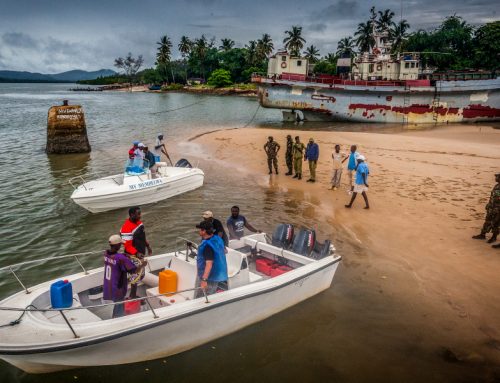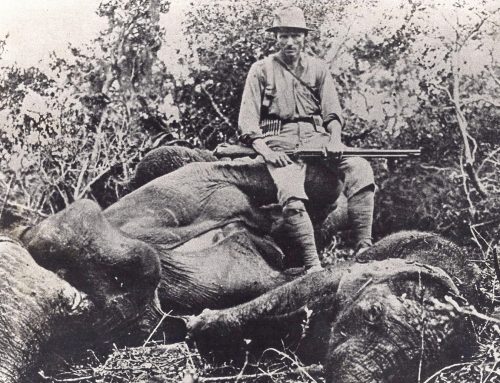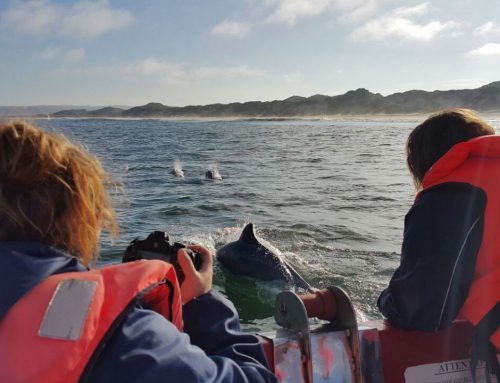At the end of September 2016 a gyrocopter will start flying over the Eastern Cape part of the Karoo, with an instrument on board that will survey the rock down to one kilometre. It will fly at a height of 40 metres above the ground along a 10 000 km survey line, straddling the districts of Jansenville, Klipplaat and Waterford.
This deep geophysics research is critical to any decision around shale gas development. As the professor puts it: “It is one thing to create big projections in terms of GDP but what does this mean for the environment, the people on the ground and the existing agricultural economy? There are so many factors that need to be considered,” says geophysics professor Moctar Doucouré of the Africa Earth Observatory Network (AEON) of the Earth Stewardship Science Research Institute (ESSRI) at Nelson Mandela Metropolitan University in Port Elizabeth.
“We need to know, for example, if there are deep faults and fractures, they would be a conduit for gas and contaminants from fracking or deep level drilling. This could also precipitate microearthquakes.”
Prof Doucouré says a key starting point is “to establish a natural baseline of how the Karoo looks today – the surface and the subsurface – so that if shale gas exploration and/or fracking ever takes place, we will know exactly what has changed.”
The survey area was selected because it has been part of AEON’s research project area for the past three years.
Since 2013 AEON-ESSRI’s focal programme has been Karoo shale gas baseline research. Towards this, the AEON-ESSRI team of professors and 30 Masters and PhD students are currently coordinating several trans-disciplinary baseline studies in the Karoo – from groundwater data to livelihoods to deep rock structure to community health to ecosystem health – in order to develop the first comprehensive portrait of the Karoo.
It has taken many months to get the project airborne because every landowner and community in the survey area needs to give consent. This required the building of trust and making sure landowners felt comfortable about why this data needs to be collected and for whom.
“For the first time ever in this part of the Karoo, we will be measuring the magnetism of the rocks to determine if there are deep fault lines, fractures and magnetically mineralised rock bodies from a few hundred metres down to a kilometre,” adds Prof Doucouré.
“We have already done measurements on the electrical conductivity and microseismicity down to 5km depths, and we need to put all this data together to better understand the interplay between the fracture zones and sedimentary rocks, in particular the hard mudstones of the Whitehill Formation, which is known to be a potential source of shale gas at depth.”
The professor says it is too early to comment but that the AEON-ESSRI team is starting to gather key data, including the quality of water and levels of salinity in deep level rock formations.
AEON-ESSRI is a transdisciplinary, cross-faculty institute focuses on postgraduate student development through multi-mentorship and research. They currently have 32 postgraduate students at NMMU connected to the institute across faculties, with a large number in the science faculty but also in the arts, health sciences and business and economic sciences faculties.
To help fund the Karoo baseline research they are partnering with the Eastern Cape government, which has contributed R16million to the programme, while NMMU, through AEON-ESSRI, has contributed a further R15million, predominantly in support of postgraduate students and research capacity.
One of the key engagements the AEON-ESSRI team has needed to undertake in the Karoo has been to explain to Karoo landowners and communities why this is ‘real’ research. Since 2011, the Karoo’s citizens have seen representatives of oil and gas companies claiming to have done in-depth research, including on the Karoo’s groundwater.
Groundwater is the main source of water in the Karoo and if shale gas mining went ahead, a vast amount of water would be required. Farmers and communities in the Karoo currently access ground water down to about 150m, but the same groundwater may go down to 500m in places.
The oil and gas companies’ so-called water research was little more than desktop exercises from which they felt justified to make statements about the safety of the water and environment in their hands.
“It is critical to properly research and analyse the Karoo’s groundwater as it is today, together with the host structures in the surface and subsurface. This requires years of applied hydrogeology, geophysics, geochemistry and ecosystems research,” says Prof Doucouré.
He is pleased to share that since 2014 they have made significant progress with groundwater sampling: “To date our postgraduate students have sampled over 700 boreholes across the Eastern Cape part of the Karoo and the samples are analysed for their chemistry in our NMMU laboratory by expert technicians. This includes analysing biogenic methane levels, which are very different to the thermogenic methane at deep levels associated with fracking.”
Prof Doucouré explains that baseline studies are all about creating a foundation of thorough research from which to think and act.
“You cannot take decisions or produce accurate economic forecasts until you have collected and analysed the required data. Only then can you create a clearer picture of the resource, in this case, shale gas, and the environment where it exists,” he says. The same applies to any other form of mining, including uranium, for which the Karoo is also currently being targeted.
To assist the people of the Karoo to better understand AEON-ESSRI’s work, the team has organised meetings and round-table discussions with communities, local and district municipalities, and organised agricultural bodies such as Agri Eastern Cape, Agri SA and the National Wool Growers Association (NWGA). They also led an educational focus initiative in Cradock where they demonstrated a ‘mock fracking’ in a sandbox using colourants to show how the frackwater flows through the sand.
“Citizen Science is a big part of our approach and we are currently training ten women from Cradock to do water sampling and monitoring. They will be able to take readings of basic water measurements like salinity, temperature and levels in the boreholes, and then send it to our university laboratory in Port Elizabeth via smartphones. This will assist us in flagging problems,” says Prof Doucouré, adding that they plan to roll out this training to other municipalities.
He says they chose to start in Cradock because it is demarcated in most of the exploration licensing application areas.
The AEON-ESSRI team is already using a drone/UAV, which can carry 5kg equipment to monitor the surface and ecosystem of the Karoo from Tarkastad to Cradock to Graaff-Reinet to Aberdeen. The drone carries equipment for visual observation photographs and videos over a range of seasons. It will also be used for measuring plant and soil conditions, using hyperspectral remote sensing.
“We are also collecting samples of living Karoo micro invertebrates, which are very sensitive to changes in the environment,” Prof Doucouré adds. This work is being done in collaboration with the Chair of Shallow Water Ecosystems at NMMU. And they have a postgraduate student in the Department of Botany testing the effect of fracking fluid on Karoo plant species of conservation concern. This is currently being done in a laboratory but it will also be tested on a larger scale in situ.
All these, and other research initiatives will be holistically analysed and assessed by the team whose research findings will be made available to everyone. “We are getting close to being able to release some interesting finds, hopefully before the end of the year, says Prof Doucouré.




